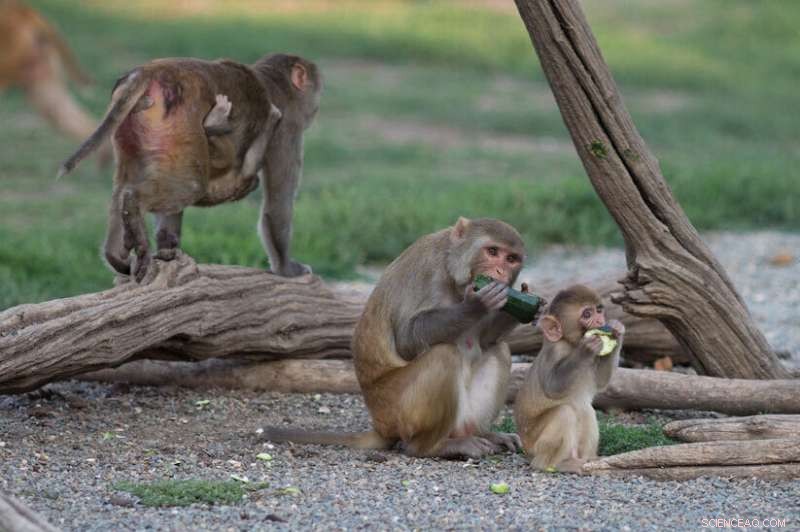
På detta odaterade foto från California National Primate Research Center, rhesus apor ses i deras utomhushölje vid California National Primate Research Center i Davis, Kalifornien. En grupp av djuren som utsatts för brandrök som spädbarn har utvecklat lungor som är cirka 20 procent mindre än andra rhesusapor. (CNPRC/University California Davis via AP)
Först kom lågorna, en rasande eldstorm som drivs av 80 mph (80 km / h) vindbyar som förbrände Kelsey Nortons hus och dödade 85 människor i hennes samhälle.
Sedan kom röken - inte bara från skogen utan också från cirka 14, 000 hus och deras innehåll som brann, generera en tjock plym som omslöt delar av norra Kalifornien i veckor och lämnade Norton flämtande.
Och sedan branden, mer än ett år nu, det har varit sjukdom:upprepade luftvägsinfektioner som skadar Nortons styrka, störa hennes arbete och lämna den 30-åriga hjärtsjuksköterskan orolig för framtida hälsoproblem.
"Jag vill inte ha cancer i 50 -årsåldern eftersom jag andades in rök i 30 -årsåldern, " Hon sa.
Den omedelbara mängden liv och egendom som förlorades när en brand slog igenom Sierra Nevada vid foten av staden Paradise, Kalifornien i november 2018 är väldokumenterat. Fortfarande okänt är den långsiktiga påverkan av den intensiva rökexponeringen som drabbats av tragedins överlevande och de hundratusentals människor som lever i samhällen i motvind av branden.
Alltmer intensiva skogsbränder bränner skogar från hela västra USA till Australien och väcker oro bland invånare och vårdpersonal över långsiktiga hälsoeffekter från rökexponering.
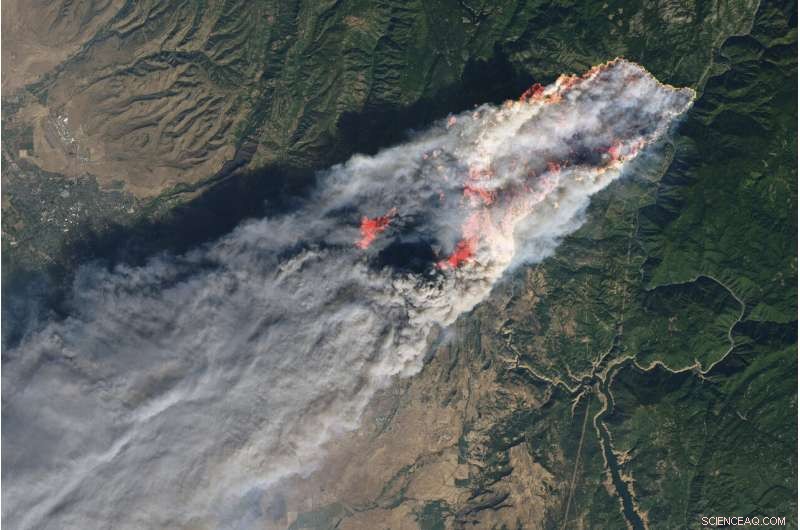
Den här november 2018 -bilden från NASA visar lågor och rök från Camp Fire som utbröt 140 kilometer norr om Sacramento, Kalifornien Allt fler intensiva skogsbränder som har svidit skogar från Kalifornien till Australien väcker oro över långsiktiga hälsoeffekter från rökexponering i drabbade städer och städer. (NASA via AP)
Frågan har långtgående konsekvenser eftersom klimatförändringar gör vissa regioner i världen torrare och mer benägna att bränder som skickar upp rökränder som kan resa tusentals miles och drabba miljontals människor.
De oöverträffade bränderna som brinner över Australien ger det senaste exemplet eftersom de täcker stora städer med farlig luftförorening. Rök från dessa bränder, som började brinna i september, vid denna vecka hade spridit sig över mer än 7,7 miljoner kvadratkilometer (20 miljoner kvadratkilometer) och drev över Stilla havet för att nå Sydamerika, enligt FN:s meteorologiska byrå och Copernicus Atmosphere Monitoring Service.
Bränderna har tänt mer än 2, 000 hus och dödade minst 26 människor. Myndigheterna beordrade nya evakueringar i New South Wales och grannstaten Victoria när stigande temperaturer och oregelbundna vindar på fredagen hotade att fläkta dussintals eldsvådor som fortfarande brinner ut ur kontroll.
Båda delstaterna utfärdade varningar om farlig luftkvalitet för drabbade områden och sa att personer med hälsoproblem bör överväga att flytta tills röken försvinner.
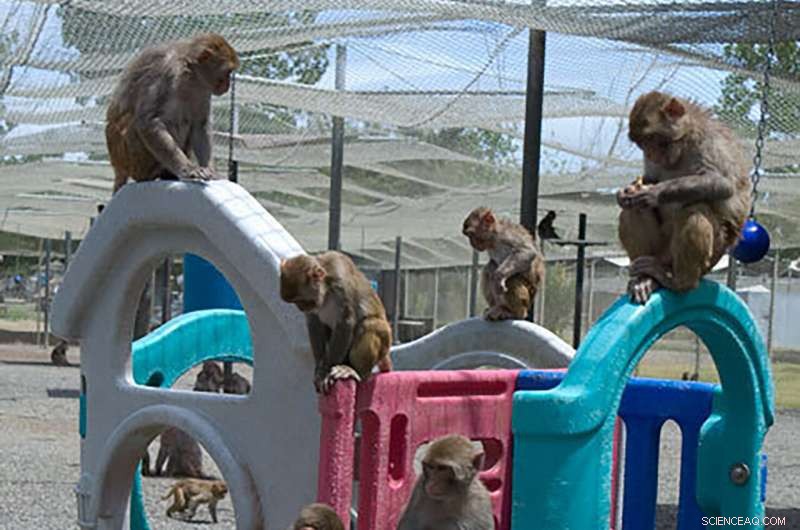
På detta odaterade foto från California National Primate Research Center, rhesus apor ses i deras utomhushölje vid California National Primate Research Center i Davis, Kalifornien. En grupp av djuren som utsatts för brandrök som spädbarn har utvecklat lungor som är cirka 20 procent mindre än andra rhesusapor. (California National Primate Research Center/University California Davis via AP)
Förenar faran, experter och brandmän säger, är spridningen av byggmaterial och hushållsartiklar gjorda av petroleumbaserad plast, allt från VVS -rör till ytterväggar. De brinner hetare och genererar rök mer giftigt än trä gör, utsätter människor för många farliga kemikalier.
Forskare och hälso -tjänstemän är övertygade om att fler människor kommer att bli sjuka och många kommer att dö när regioner som USA:s väst ser större, mer intensiva skogsbränder.
Uppskattningsvis 20, 000 för tidiga dödsfall inträffar nu årligen i USA på grund av kronisk brandröksexponering. Det förväntas fördubblas i slutet av seklet, enligt forskare som finansierats av NASA, när tiotals miljoner människor utsätts för massiva "rökvågor" som härrör från bränder i väststater.
Men medan dessa prognoser hjälper till att illustrera de djupgående effekterna av ett uppvärmande klimat, de kan inte förutsäga vilka bränder som kommer att visa sig dödliga och vilka individer som kommer att utveckla lungsjukdomar eller andra sjukdomar.

Denna torsdag, 21 november 2019, Foto, Kelsey Norton visar bilder av hennes egendom innan den överskreds av en löpeld som förbrände hennes hus och dödade 85 av hennes andra stadsbor i Chico, Kalifornien Norton säger att hon har drabbats av upprepade luftvägsinfektioner sedan hon andades in rök från elden som förstörde hennes hemstad Paradise. (AP Photo/Matthew Brown)
En av relativt få långsiktiga studier på området pågår vid California National Primate Research Center. Femtio rhesusapor som lever i utomhuspennor året runt utsattes för en lång period av eldrök som spädbarn 2008. De har utvecklat lungor 20% mindre än en annan grupp apor som föddes ett år senare, forskare funnit.
"Det är den närmaste djurmodellen för att replikera vad som händer med barn, "sa Lisa Miller, centrumets associerade chef för forskning.
Skillnaden visade sig först när djuren var tonåringar, och har fortsatt som de har mognat. Det är omöjligt för det otränade ögat att skilja de rökutsatta aporna från hundratals andra som delar sina pennor, men Millers team planerar därefter att undersöka hur den minskade lungfunktionen påverkar apornas aktivitetsnivåer.
När djuren åldras, alla sjukdomar de utvecklar och hur de dör skulle ge ledtrådar till människors öde som är starkt utsatta för rök.
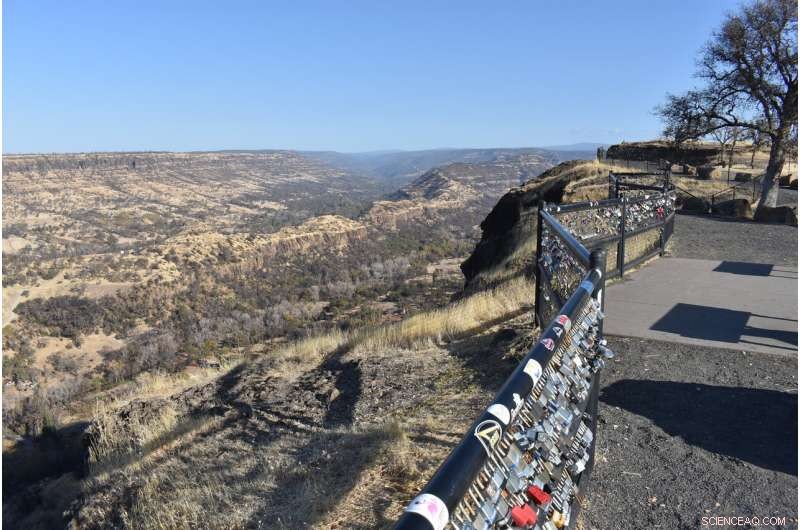
Den här fredagen, 22 november 2019, bilden visar utsikten från Elizabeth Watlings bakgård med utsikt över Butte Creek Canyon, som brändes i en löpeld 2018 som förstörde den närliggande staden Paradise, Calif. Watling deltar i ett universitet i Kalifornien, Davis studie av hälsoeffekterna av inandning av rök från elden som dödade 85 människor och förstörde mer än 14, 000 hem. (AP Photo/Matthew Brown)
Studier av vilda brandmän ger också insikter om riskerna med rökinandning. De har visat betydligt högre lungcancer och dödsfall av hjärtsjukdomar, sa Michael Kleinman, som forskar om hälsoeffekter av luftföroreningar och är professor i miljötoxikologi vid University of California, Irvine.
Brandmän får mycket högre och vanligare rökdoser, but Kleinman said a proportional increase in illnesses could be expected among the general public exposed to wildfire smoke across California and the West.
"It's safe to say there will probably more effects at the long-term level, " Kleinman said. "Especially if those events happened over a longer period of time or more repeatedly, there will be cumulative damage to the lung and heart which eventually will lead to chronic disease."
As she fled with her boyfriend ahead of the fire that destroyed Paradise on the morning of Nov. 8, 2018, Norton said the smoke was so thick "it was like midnight."
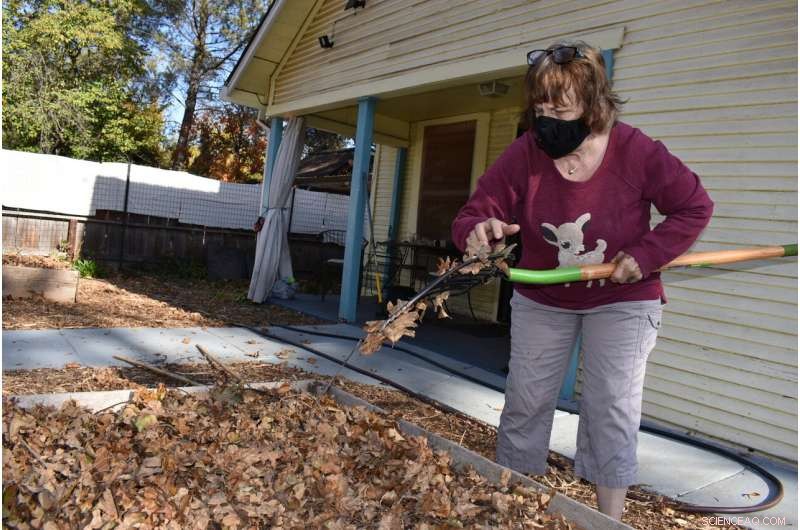
Denna fredag, 22 november 2019, Foto, Elizabeth Watling spreads leaves over her garden to prepare it for winter while wearing a mask to protect against dust in Chico, Calif. Watling says her throat has been easily irritated since she was exposed to the huge smoke plume from a wildfire that destroyed the nearby town of Paradise the year before, killing 85 people and destroying more than 14, 000 hem. (AP Photo/Matthew Brown)
A few days later, she went back to work at a hospital in Chico, about 15 miles (24 kilometers) miles from Paradise. But smoke from the still-burning fire had made it inside the facility.
There weren't enough face masks to go around so Norton said she went without one for several days.
Initially she felt just a bit wheezy, as she had during the last major fire in the area about a decade earlier. But two weeks later she came down with a respiratory infection that brought fever and severe congestion.
When that finally cleared, she got another, then another—eight or nine infections in all over the past year.
"I just want to break this cycle of sickness, " Hon sa.
Norton says she never smoked, nor did her parents, and never had any respiratory issues prior to the fire. She missed so much work in the months after the fire that she got a warning from a supervisor.

Denna torsdag, Nov. 21, 2019, Foto, Dr. Nicholas Kenyon talks about the impacts of wildfires on human health at the UC Davis Medical Center in Sacramento, Calif. Kenyon says toxic smoke from houses and their contents that burn in wildfires is an emerging public health risk. (AP Photo/Matthew Brown)
To try to keep from getting sick, she rinses out her sinuses regularly and takes antihistamines to reduce inflammation in her airways. She also avoids large gatherings, including skipping office parties and two weddings, out of fear that she could pick up a virus. She tries to eat healthy and reduce stress by seeing a counselor.
Norton has been to a pulmonologist and two ear nose and throat doctors to little avail, and has been referred to a sinus specialist at Stanford University for further testing.
The pulmonologist who initially treated her, Dinesh Verma, said he sees a "direct correlation" between Norton's smoke exposure and her subsequent health struggles.
"The logical explanation definitely would be that intense smoke, basically chemical exposure, did damage the airways to the extent that they're now more susceptible" to infection, Verma said.
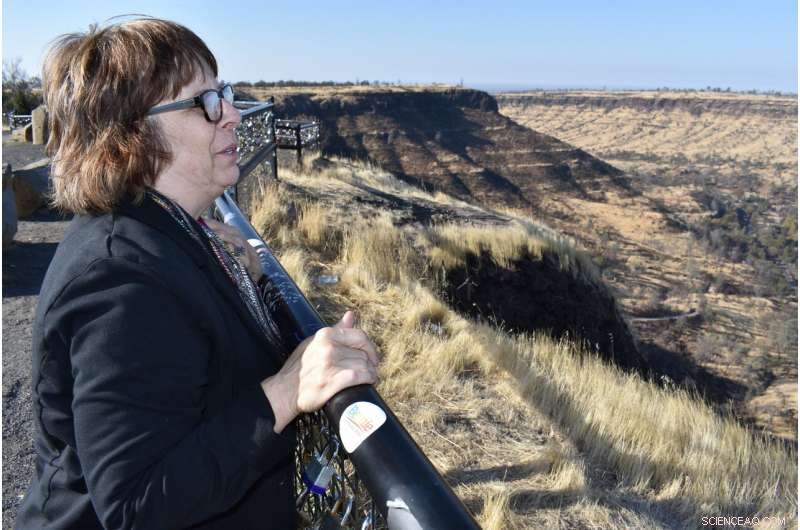
Denna fredag, 22 november 2019, Foto, Elizabeth Watling looks over Butte Creek Canyon, which was burned in a 2018 wildfire that destroyed the nearby town of Paradise, Calif. Watling is participating in a University of California, Davis study of the health impacts of inhaling smoke from the fire that killed 85 people and destroyed more than 14, 000 hem. (AP Photo/Matthew Brown)
Verma said virtually all of his hundreds of patients from Chico and Paradise had complications after the fire that required them to be hospitalized or treated.
Most had preexisting conditions such as asthma and needed only a trigger to send them into a downward spiral. Predicting what will happen with otherwise-healthy patients like Norton is more difficult, han sa.
Norton is among about 9, 000 people who responded to a health survey as part of a long-term health study of smoke exposure in Paradise and other California communities. The work is led by researchers at the University of California, Davis, who plan to track the lung health of a small number of those respondents in coming years by measuring their breathing capacity.
They're also collaborating with Williams at the primate center to see if the decline seen in the rhesus monkeys has parallels for human infants.
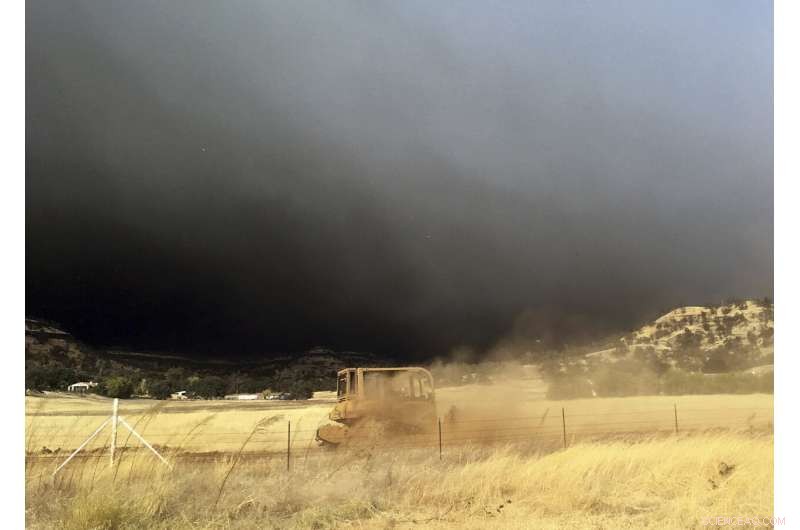
I denna 8 november, 2018, filfoto, smoke from the Camp Fire darkens the sky on the horizon as a bulldozer cuts a fire line to protect Butte College in Oroville, Calif. Increasingly intense wildfires that have scorched forests from California to Australia are stoking worry about long-term health impacts from smoke exposure in affected cities and towns.. (AP Photo/Don Thompson, Fil)
Dr. Nicholas Kenyon, a pulmonologist involved in the effort, said determining the health effects of smoke is increasingly urgent given the region's burgeoning population and more frequent fires due to climate change.
"We've got the population affected right now, but it's not going to be isolated to us. This is going to be the entire West, " Kenyon said. "Nobody's been really inhaling this kind of stuff from structures until now."
Another participant in the UC Davis study, 64-year-old Elizabeth Watling, lives in Chico and remained there through the fire so she could look after her 94-year-old aunt. She recalls smoke so thick that it left a layer of ash all over town, gray and light as snow. The air remained heavily polluted until it rained more than two weeks later.
When she gardens or does other outdoor activities, Watling wears a mask because her throat has become so easily irritated by dust. She fiddles with it often, taking the mask on and off to talk, and wonders how effective it will be since she can fit her fingers through gaps along her cheeks.
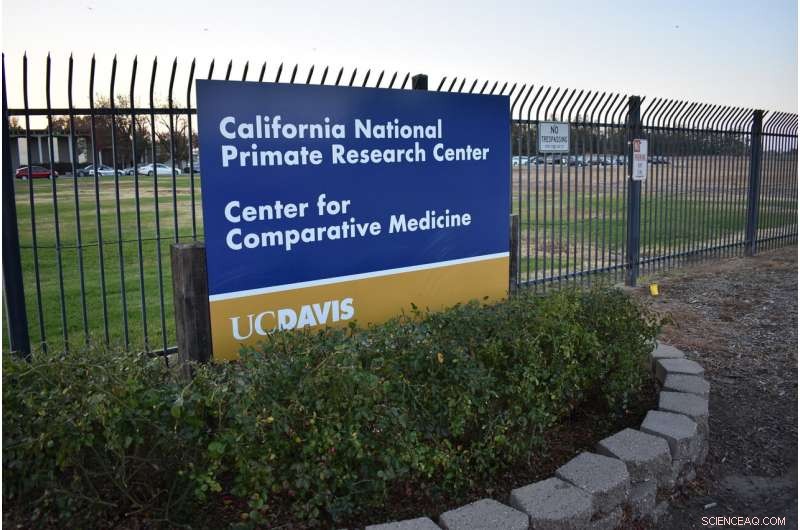
Den här fredagen, 22 november 2019, Foto, shows the entrance to the California National Primate Research Center in Davis, Calif. After a group of monkeys housed outdoors at the facility were exposed to wildfire smoke as infants, scientists are studying the animals to learn what kind of impacts breathing in smoke could have on children. (AP Photo/Matthew Brown)
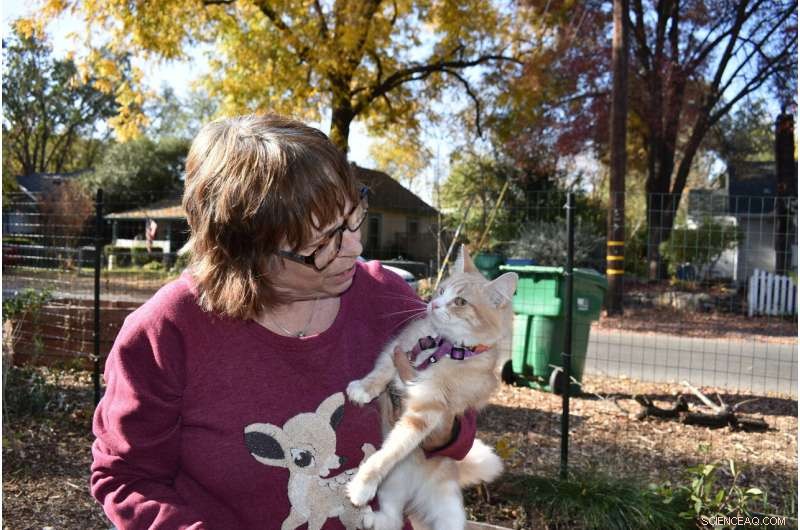
Denna fredag, 22 november 2019, Foto, Elizabeth Watling holds her cat Tampopo as she talks about her health concerns over being exposed to wildfire smoke at her home in Chico, Calif. Watling says the fire that obliterated the nearby town of Paradise filled Chico's air with smoke for two weeks and left a coating of ash on the ground. (AP Photo/Matthew Brown)
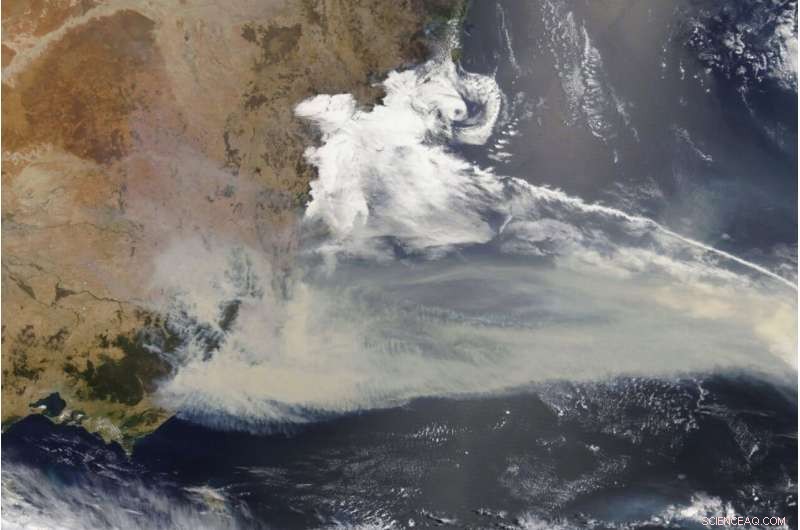
This Jan 2, 2020 file photo captured by NASA's Terra satellite and made available by the Moderate Resolution Imaging Spectroradiometer (MODIS), shows thick smoke blanketing southeastern Australia along the border of Victoria and New South Wales. Increasingly intense wildfires that have scorched forests from California to Australia are stoking worry about long-term health impacts from smoke exposure in affected cities and towns. (NASA via AP, Fil)
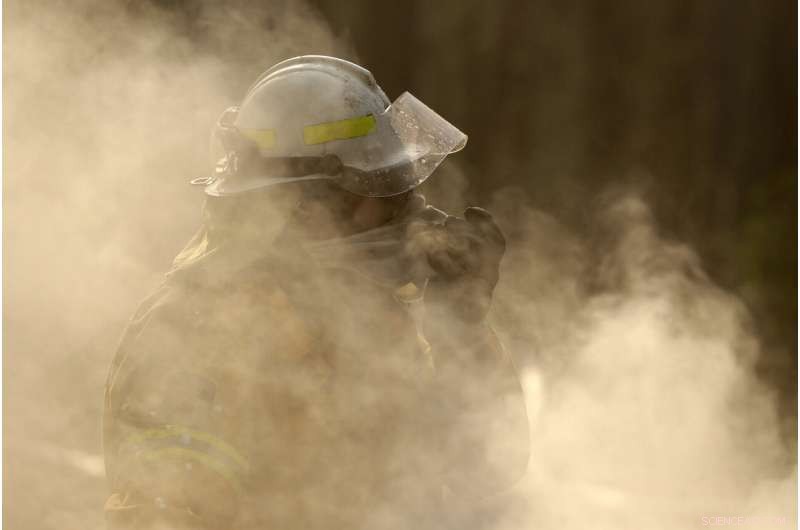
I denna 3 januari, 2020, filfoto, a firefighter covers his face from black smoke as he battles a wildfire near Bendalong, Australien. Increasingly intense wildfires that have scorched forests from California to Australia are stoking worry about long-term health impacts from smoke exposure in affected cities and towns. (AP Photo/Rick Rycroft, Fil)
The health issues Watling blames on the smoke are less severe than Norton's—a scratchy throat that won't go away, coughs that linger, shortness of breath.
She expected those to go away but they haven't. Watling now figures that, given her age, she won't ever fully recover and the smoke could shave years off her life.
"I don't think the news is good for me, " Hon sa.
© 2020 Associated Press. Alla rättigheter förbehållna.